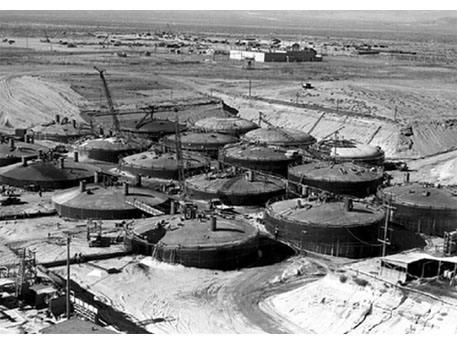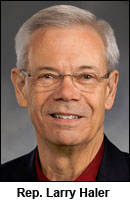TAKE A STAND!
No safety net for workers at nation’s most dangerous worksite
The following story appears in the Washington State Labor Council’s 2017 Legislative Report published in August.
By NICKOLAS A. BUMPAOUS
“Imagine….. not being able to take your daughter to the fair, and see the look on her face the first time she gets to ride a pony, what it must feel like to know that you are still alive when the time comes, your health will not allow you to walk your first born down the isle at their wedding.
Imagine having to tell your young children or grandchildren that you cannot play outside with them because it hurts too much. Imagine knowing that all of your ambitions to one day spend a few short years with the love of your life, enjoying a much deserved retirement will never come. While those are just thoughts for us, they are now realities for those men and women, mothers and fathers, husbands and wives who just went to work.”
In 1943, the federal government brought 50,000 people to Hanford to manufacture plutonium for the world’s first atomic bombs. Forty-seven years later in 1990, Hanford’s mission shifted from nuclear materials production to environmental clean-up.
 Located in Southeastern Washington, the Hanford Nuclear Reservation is the most contaminated worksite in the western world. It is estimated that cleaning up Hanford’s 56 million gallons of toxic radioactive waste, which is stored in underground tanks, will take at least another 50 years. This means that for another five decades, Hanford workers will continue to be exposed to some of the most hazardous substances known to man.
Located in Southeastern Washington, the Hanford Nuclear Reservation is the most contaminated worksite in the western world. It is estimated that cleaning up Hanford’s 56 million gallons of toxic radioactive waste, which is stored in underground tanks, will take at least another 50 years. This means that for another five decades, Hanford workers will continue to be exposed to some of the most hazardous substances known to man.
Unfortunately, many of the chemical and radiological hazards at Hanford are unidentified, and the safety measures meant to contain these chemicals and their vapors are often inadequate. When exposed to these substances, the burden of proof is on the worker to connect their exposure to their disease. Given the extreme inability to categorize or quantify these exposures, these Washington workers are left with the nearly insurmountable obstacle of linking their respiratory and neurological illnesses to Hanford.
One study noted that, “the ongoing emission of tank vapors, which contain a mixture of toxic chemicals, is inconsistent with the provision of a safe and healthful workplace free from recognized hazards. Mitigating the emission of and worker exposure to tank vapors represents an extraordinary challenge that cannot easily be addressed through traditional approaches.”
In 2014, vapor exposures were on the increase due to resumption of tank remediation work, where some 70 workers reported for medical evaluation due to vapor exposures. The resulting outcry led to commission of a independent report by the federal Department of Energy, and led by DOE contractor Savannah River National Laboratories. Its report, released on Oct. 30, 2014, was entitled the Tank Vapor Assessment Team, or TVAT. This report contained numerous critical findings and 47 separate recommendations, most of which Hanford is still scrambling to implement.
Among the findings:
► “Management must acknowledge the health risk associated with episodic releases of tank vapors. While the ability to measure and document exposures may currently be inadequate, workers are nonetheless being affected by vapors on the tank farms. Acceptance of this observation should be communicated to all internal and external stakeholders.” — p. 15-16.
► “Of the issues facing the current IH program, the one causing the vast majority of reported worker exposures requiring medical treatment comprise short-term and acute (bolus) exposures, which cause immediate symptoms in the workers and may or may not develop into medical signs of chemical exposure. The current program is not designed to detect and is incapable of detecting and quantifying this type of transient exposure event.” — p. 17
► “A presumption of work-relatedness is consistent with Occupational Safety and Health Administration (OSHA) guidance. Previous medical determinations should be re-visited based on a more thorough understanding of the uses and limitations of the monitoring data.” – p. 18
Despite the recognized uniqueness of the risks, Hanford workers’ claims are denied at five times the rate of other self-insured employers. The U.S. Department of Energy Office of River Protection and its private contractors, have failed to ensure that workers’ claim files are complete and accurate and has used the lack of accurate worksite data as a reason to question the validity of Hanford workers’ claims. These realities highlight the need for an occupational illness presumption standard, and in the 2017 legislative session, lawmakers had the opportunity to implement just that.
 This year, Rep. Larry Haler (R-Richland) sponsored HB 1723 to enact this recommendation of occupational illness presumption for Hanford workers. With the support of Reps. Marcus Riccelli (D-Spokane), Mike Sells (D-Everett), Mia Gregerson (D-SeaTac), Timm Ormsby (D-Spokane), Beth Doglio (D-Olympia) and Gerry Pollet (D-Seattle), SHB 1723 passed the House of Representatives on a strong bipartisan vote (69-29).
This year, Rep. Larry Haler (R-Richland) sponsored HB 1723 to enact this recommendation of occupational illness presumption for Hanford workers. With the support of Reps. Marcus Riccelli (D-Spokane), Mike Sells (D-Everett), Mia Gregerson (D-SeaTac), Timm Ormsby (D-Spokane), Beth Doglio (D-Olympia) and Gerry Pollet (D-Seattle), SHB 1723 passed the House of Representatives on a strong bipartisan vote (69-29).
Unfortunately, despite having no fiscal impact to the state, this important bill to protect workers and their families died in the Senate Labor, Commerce & Sports Committee chaired by Sen. Michael Baumgartner (R-Spokane).
Hanford’s story began with a national mission for the benefit and protection of this great country. Our selfless Nuclear Veterans continue that mission to this day, protecting our lands, our rivers, and our air. Our State Legislature must find its moral compass and come to the aid of these proud citizens and their families who we are currently failing to protect.
Nickolas A. Bumpaous is Government Affairs Director for Plumbers and Steamfitters (UA) Local 598.
Click here to see more reports from the Washington State Labor Council’s 2017 Legislative Report. Or download the entire 8-page PDF.





